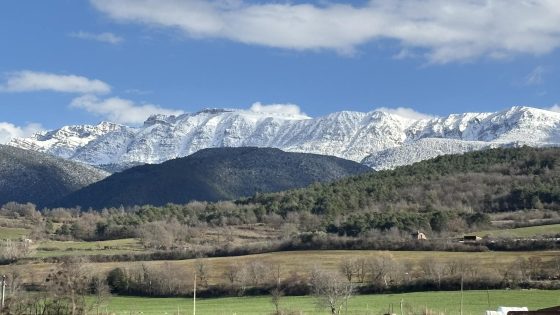This March has been remarkable for weather enthusiasts in Spain, as half of the meteorological stations in the Xarxa d’Observatoris Meteorològics (XOM) have recorded unprecedented rainfall. As of March 26, 2025, these records highlight a significant increase in precipitation, with more data potentially emerging before the month concludes. How does this impact our understanding of climate patterns?
- Half of XOM stations set March rainfall records.
- Bellestar recorded 115.2 liters/m² this month.
- Alinyà reached 195.5 liters/m² in March.
- Cadí Nord observatory set a new rainfall record.
- High mountain areas received significant precipitation.
- Cerdanya's capital did not break its rainfall record.
Record Rainfall in March: What It Means for Spain’s Climate
March 2025 has brought extraordinary rainfall to Catalonia. Why are these records significant? They not only indicate changing weather patterns but also highlight the potential impacts of climate change on local ecosystems. With ongoing monitoring, we can better understand these shifts.
Understanding the Impact of Record Rainfall on Local Ecosystems
The recent rainfall records in Catalonia have sparked discussions about their effects on local ecosystems. Increased precipitation can lead to both positive and negative outcomes for the environment. Here are some key points to consider:
- Enhanced water supply for agriculture and local flora.
- Potential flooding risks in vulnerable areas.
- Impact on wildlife habitats and migration patterns.
- Changes in soil quality and erosion rates.
Historical Context of Rainfall Records in Catalonia
Historically, March has been a month of varied weather in Catalonia. This year, stations like Bellestar and Alinyà have set new records, with Bellestar accumulating 115.2 liters per square meter and Alinyà reaching 195.5 liters. These figures are significant when compared to historical data, showing a clear trend of increasing precipitation over the years.
Future Implications of Increased Rainfall in Spain
As climate change continues to influence weather patterns, the implications for Spain are profound. Increased rainfall can lead to better water resources but also raises concerns about flooding and infrastructure strain. Understanding these Trends is crucial for future planning and environmental conservation.
In conclusion, the record rainfall in March 2025 serves as a reminder of the dynamic nature of our climate. As we continue to monitor these changes, it is essential to consider their broader implications for both local and global ecosystems.

































